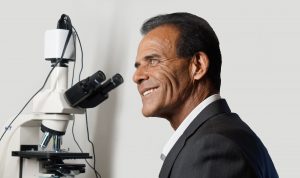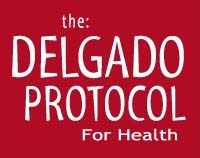Hairloss is an outward sign of aging that many people wrongfully assume is unavoidable. A receding hairline can cause a person to look less healthy, make one’s facial features appear much older, and negatively impact one’s self-image and self-esteem. Fortunately, hair loss is not an inevitable part of aging, and there are plenty of treatment options available. Below is an outline of the top 6 most common hair restoration tools, and the pros and cons associated with each.
Prescription Medications
 Finasteride is an FDA approved medication for hair loss and it is taken as a pill. It helps enhance hair growth and slows hair loss by acting as 5-α-Reductase inhibitor and thereby inhibiting the conversion of testosterone into DHT.[i] This is beneficial because too much DHT and the sensitivity of hair follicles to DHT is the root cause of most hair loss. Finasteride is not the best treatment option however — the results are typically minimal, and it can produce a myriad of troublesome side-effects including: dizziness, headaches, runny nose, sneezing, insomnia, chills, confusion, swelling in hands and feet, weakness, skin rash, loss of libido, inability to orgasm, and impotence.
Finasteride is an FDA approved medication for hair loss and it is taken as a pill. It helps enhance hair growth and slows hair loss by acting as 5-α-Reductase inhibitor and thereby inhibiting the conversion of testosterone into DHT.[i] This is beneficial because too much DHT and the sensitivity of hair follicles to DHT is the root cause of most hair loss. Finasteride is not the best treatment option however — the results are typically minimal, and it can produce a myriad of troublesome side-effects including: dizziness, headaches, runny nose, sneezing, insomnia, chills, confusion, swelling in hands and feet, weakness, skin rash, loss of libido, inability to orgasm, and impotence.
Natural Supplements
 Beta-sitosterol is a plant sterol that is scientifically proven to help prevent hair loss by acting as an all-natural 5-α-Reductase inhibitor.[ii] Although it is found in a variety of plant foods, saw palmetto is considered one of the richest natural sources. Supplements that contain either isolated beta-sitosterol or saw palmetto, or a combination of both can lead to rapid hair regrowth in individuals who are experiencing androgen-triggered hair loss. The benefits of using these ingredients is that they are safe, affordable and accessible (they don’t require a doctor’s visit) and they don’t produce the harmful side-effects that are associated with prescription medications. For a physician formulated supplement that contains a clinically effective dose of beta-sitosterol and a range of other DHT-reducing nutrients: http://www.delgadonaturals.com/dht-blocker/
Beta-sitosterol is a plant sterol that is scientifically proven to help prevent hair loss by acting as an all-natural 5-α-Reductase inhibitor.[ii] Although it is found in a variety of plant foods, saw palmetto is considered one of the richest natural sources. Supplements that contain either isolated beta-sitosterol or saw palmetto, or a combination of both can lead to rapid hair regrowth in individuals who are experiencing androgen-triggered hair loss. The benefits of using these ingredients is that they are safe, affordable and accessible (they don’t require a doctor’s visit) and they don’t produce the harmful side-effects that are associated with prescription medications. For a physician formulated supplement that contains a clinically effective dose of beta-sitosterol and a range of other DHT-reducing nutrients: http://www.delgadonaturals.com/dht-blocker/
Low-Level Laser Therapy
Low-Level Laser Therapy, or LLLT, offers a safe, effective, non-invasive alternative to surgery and topical therapy. LLLT affects the weaker, thinner, wispier hair follicles by enhancing cellular metabolism, and normalizing sebum production, which results in thicker, stronger, healthier hair. LLLT is also very convenient — there are portable devices, such as the LaserCap, which offer the clinical strength of a laser, in the comfort of the patient’s own home. Using these completely portable devices for 30 minutes every other day can produce phenomenal hair regrowth results. Although the initial investment sounds steep (the LaserCap retails for $3000), in the long run it is actually the most affordable option, because it lasts for 50,000 hours so there are no ongoing costs. Worth noting, is the fact that in order for LLLT to produce any effect, you need to have a hair follicle – if you try to treat a completely bald area it will be like fertilizing a garden that you forgot to plant – it simply won’t work.
Platelet-Rich Plasma Therapy
Platelet-Rich Plasma therapy, or PRP, is a relatively new procedure with an amazing ability to kick start a patients natural healing process. The procedure consists of extracting blood from the patient and then centrifuging the blood to remove red blood cells and increase the concentration of healing growth factors. A thin needle is then used to inject the PRP into the scalp and the growth factors stimulate the hair to regrow. The procedure is simple, minimally-invasive, and relatively pain-free and patient satisfaction is high. Studies have found just 4 PRP sessions results in markedly reduced hair loss and increased hair count, and the effects are produced even in patients that do not respond to finasteride or topical therapy (minoxidil).[iii]
Topical Therapy
There are both over-the-counter and prescription topical agents that can help promote hair restoration. Studies show that a 5 minoxidil topical solution (the active ingredient in Rogaine) helps to halt hair loss and promote hair regrowth in 84 of men.[iv] Minoxidil is not without drawbacks though, it can cause increased heart rate, itchiness, dandruff, soreness, and inflammation of the scalp. Formula 82M is a prescription topical that is considered more effective because in addition to 5 minoxidil, it also contains several other androgen-reducing ingredients that work synergistically to treat hair loss. 82M can also be combined with Finasteride, LLLT and/or PRP, for enhanced hair restoration results.
Minimally-Invasive Surgery
If all else fails, surgery is available, and it is a lot less invasive then it used to be. NeoGraft FUE is a single-follicle implantation surgery and the entire procedure is done without a scalpel or stitches. There is little-to-no discomfort caused by NeoGraft FUE, the recovery time is rapid, and the results are 100 natural looking.[v] The procedure is expensive however, and you need to be careful when choosing a surgeon because hair transplantation is an art form and the quality of the results will vary widely. Ideally, you should look for someone who is certified by the American and International Board of Hair Restoration Surgery, and/or who is a board-certified NeoGraft surgeon.
[i] https://www.ncbi.nlm.nih.gov/pubmed/8077349
[ii] http://online.liebertpub.com/doi/abs/10.1089/107555302317371433
[iii] https://www.ncbi.nlm.nih.gov/pmc/articles/PMC4134641/
[iv] http://www.ishrs.org/articles/minoxidil-study.htm
[v] https://www.neograft.com/



